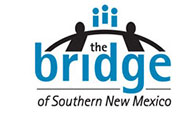Looking Back Gives Us the Courage to Move Forward
As published in the Las Cruces Bulletin
Just three years ago, workforce development was this nut we couldn’t seem to crack.
We had jobs that needed qualified people. We had opportunities to attract new businesses and industries here that would drive our economy forward – if we could provide workforce talent.
We had people who could become those qualified people – youth, young adults, and those who wanted to increase their skills and their opportunities. We had people who genuinely wanted to chart a path to a better economic future for themselves and their families – they just may not have known how.
And we had everything needed to connect those people to those opportunities. We had amazing educational institutions – more than most communities are fortunate to have. We had a host of workforce programs and resources. We had an amazing set of nonprofit organizations and service providers who work tirelessly to improve the lives of those they serve.
All we were missing was a clear understanding of how to connect all of these moving parts into vibrant “pathways” that would, ultimately, chart the course to a new future for our county.
So here we are, three years later. We understand what we need to do, and we’re doing it. And the rest of the state is learning from the trail we are blazing!
Mayor Miyagishima recognizes just what a comprehensive approach to workforce development means for Las Cruces, recognizing the work of The Bridge of Southern New Mexico and Workforce Talent Collaborative in his State of the City address. Growing the earning power of people – putting every asset we have to work for them – is key to economic growth of our city and our county.
Newly appointed Public Education Secretary Karen Trujillo recognizes the opportunities we can harness for students in our K-12 system to more closely connect education to employment and increase our ability to grow the earning power of our graduates.
Newly appointed Workforce Solutions Secretary Bill McCamley recognizes the pivotal role of our Workforce Connections partners in creating literal “bridges” to education and employment for the people who need help the most in our community. Our first-ever plan puts those dollars in context of the larger picture of workforce development, and the partnership represented by the Collaborative gives them a whole new set of community advocates for the important work they do.
Much of this community’s work over the past two years was funded by a planning grant from the W.K. Kellogg Foundation. We just wrapped up the Year 2 grant report – a chance to look back and assess all that has transpired over just this past year. It was astounding to report progress across the board – not in planning, but in action. This was never about a plan – it was about identifying the path forward for us as a county.
Thanks to the Workforce Talent Collaborative whose commitment to change has made the planning and the action possible:
Debbi Moore, Greater Las Cruces Chamber of Commerce; Kevin Boberg, Borderplex Alliance; Les Baldock, Mesilla Valley Economic Development Alliance; Willie Silva, El Paso Electric; Patti Lucero, TRAX International; Dr. Gilbert Moreno, Prestige Consulting; Travis Dempsey, Claudia Rodriguez, Michelle Ballard, and Rosa Hood, Gadsden ISD; Carrie Hernandez, Jeff Waugh, and Dr. Wendi Miller-Tomlinson, LCPS; Susan Wood, Fred Owensby, Mary Ulrich, Berta Cordova de Lozano, Joe Butler, and Jackie Kiefer, DACC; Patricia Sullivan, Clara Graham, and Susan Brown, NMSU; Steve Duran, Dave Reiff, and Yvette Bayless, Workforce Connections; Miguel Martinez and Teresa Vasquez, HELP NM; Melanie Goodman, US Senator Tom Udall’s office; Claudia Marez and Jamie Michaels, Doña Ana County; Dr. Griselda Martinez, Debby Childress, and Noelle Andrade, City of Las Cruces; Dawn Hommer and Rodolfo Acosta, Community Action Agency; Lori Martinez and Abeer Al-Gwahi, Ngage; Robbie Levy, retired – Las Cruces Housing Authority; and Sharon Thomas and David Armijo, South Central Regional Transport.
We are not standing still. We are leveraging every person, program, and resource we have to bring forward the solutions called for in the plan. It is collective action at its finest – again, a defining trait for how change happens in Doña Ana County.

